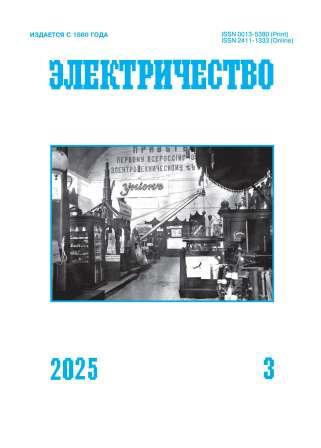Electromagnetic Resonance Phenomena in the Aircraft Interior
Abstract
During a flight, the aircraft on-board systems may be affected by a directional electromagnetic field. The electromagnetic wave penetrates into the interior and spreads through a complex labyrinth of aircraft structures consisting of compartments filled with instrument modules containing electrical system components and devices. The aircraft body and its internal compartments with instrument modules are volumetric resonators, which, when exposed to an electromagnetic field, leads to the occurrence of resonances. Electromagnetic resonance phenomena increase the level of conductive interference in the on-board electrical system cable network and electrical circuits, which negatively affects the system performance quality. When the flight path changes, the electromagnetic field wave incidence angle on the aircraft body and the wave penetration angle into its interior space change. The resonant value of the field electrical component intensity depends on the wave incidence angle on the aircraft, which must be taken into account when choosing technical means to ensure noise immunity. The article addresses matters of determining the maximum value of the field electric component intensity in the case of electromagnetic resonance phenomena occurring in the aircraft interior at various incidence angles of an electromagnetic field wave.
References
2. Сысоева Т.Г., Бутин В.И., Кундышев П.Я. Расчетная оценка величин токов, наведённых в нагрузках проводных линий внутри металлических экранов, при воздействии радиочастотных амплитудно-модулированных сигналов. – Технологии электромагнитной совместимости, 2018, № 4 (67), с. 64–68.
3. Кечиев Л.Н. Экранирование радиоэлектронной аппаратуры. М.: Гриффон, 2019, 719 с.
4. Иванов А.А., Комнатнов М.Е. Полуаналитический метод для оценки эффективности экранирования корпуса с апертурой. – Доклады ТУСУР, 2021, т. 24, № 1, с. 16–23.
5. IEEE Std 299.1-2013. IEEE Standard Method for Measuring the Shielding Effectiveness of Enclosures and Boxes Having all Dimensions between 0.1 m and 2 m. New York, IEEE, 2014, 84 p., DOI: 10.1109/IEEESTD.2014.6712029.
6. Celozzi S., Araneo R., Lovat G. Electromagnetic Shielding. Wiley-IEEE Press, 2008, 376 p.
7. Бутин В.И. и др. Численное моделирование эффективности экранирования на основе аккумулированной энергии СВЧ-излучения внутри экранированного объема РЭА. – Технологии электромагнитной совместимости, 2019, № 3 (70), с. 21–29.
8. Гайнуллин К.Г. и др. Математическое моделирование электромагнитной совместимости. Программа ЛОГОС-Э. – Технологии электромагнитной совместимости, 2019, № 4 (71), с. 16–22.
9. Свидетельство о гос. регистрации программы для ЭВМ № 2022665719 РФ. EMPcore / В.И. Бзыта и др., 2022.
10. Атабеков Г.И. и др. Теоретические основы электротехники. Ч. 2 и 3. Нелинейные электрические цепи. Электромагнитное поле. М.: Энергия, 1979, 432 с.
11. Семёнов А.А. Теория электромагнитных волн. М.: Изд-во Московского университета, 1968, 320 с.
12. Кириллов В.Ю., Томилин М.М. Влияние электромагнитного резонанса в приборных модулях летательного аппарата на наведенные кондуктивные помехи. – Электричество, 2024, № 9, с. 17–22.
#
1. Kirillov V.Yu. Elektromagnitnaya sovmestimost' letatel'nyh apparatov (Electromagnetic Compatibility of Flying Vehicle). М.: Izd-vo MAI, 2012, 164 p.
2. Sysoeva T.G., Butin V.I., Kundyshev P.Ya. Tekhnologii elektromagnitnoy sovmestimosti – in Russ. (Electromagnetic Compatibility Technologies), 2018, No. 4 (67), pp. 64–68.
3. Kechiev L.N. Ekranirovanie radioelektronnoy apparatury (Shielding of Electronic Equipment. Engineering). М.: Griffon, 2019, 719 p.
4. Ivanov A.A., Komnatnov М.Е. Doklady TUSUR – in Russ. (TUSUR Reports), 2021, vol. 24, No. 1, pp. 16–23.
5. IEEE Std 299.1-2013. IEEE Standard Method for Measuring the Shielding Effectiveness of Enclosures and Boxes Having all Dimensions between 0.1 m and 2 m. New York, IEEE, 2014, 84 p., DOI: 10.1109/IEEESTD.2014.6712029.
6. Celozzi S., Araneo R., Lovat G. Electromagnetic Shielding. Wiley-IEEE Press, 2008, 376 p.
7. Butin V.I. et al. Tekhnologii elektromagnitnoy sovmestimosti – in Russ. (Electromagnetic Compatibility Technologies), 2019, No. 3(70), pp. 21–29.
8. Gaynullin К.G. et al. Tekhnologii elektromagnitnoy sovmestimosti – in Russ. (Electromagnetic Compatibility Technologies), 2019, No. 4(71), pp. 16–22.
9. Certificate of State Registration of the Computer Program No. 2022665719 RF. EMPcore / V.I. Bzyta et al., 2022.
10. Atabekov G.I. et al. Teoreticheskie osnovy elektrotekhniki. Ch. 2 i 3. Nelineynye elektricheskie tsepi. Elektromagnitnoe pole (Theoretical Electrical Engineering. Parts 2 and 3. Nonlinear Electrical Circuits. Electromagnetic Field). М.: Energiya, 1979, 432 p.
11. Semyonov A.A. Teoriya elektromagnitnyh voln (Theory of Electromagnetic Waves). M.: Izd-vo Moskovskogo universiteta, 1968, 320 p.
12. Kirillov V.Yu., Tomilin M.M. Elektrichestvo – in Russ. (Elec-tricity), 2024, No. 9, pp. 17–22




